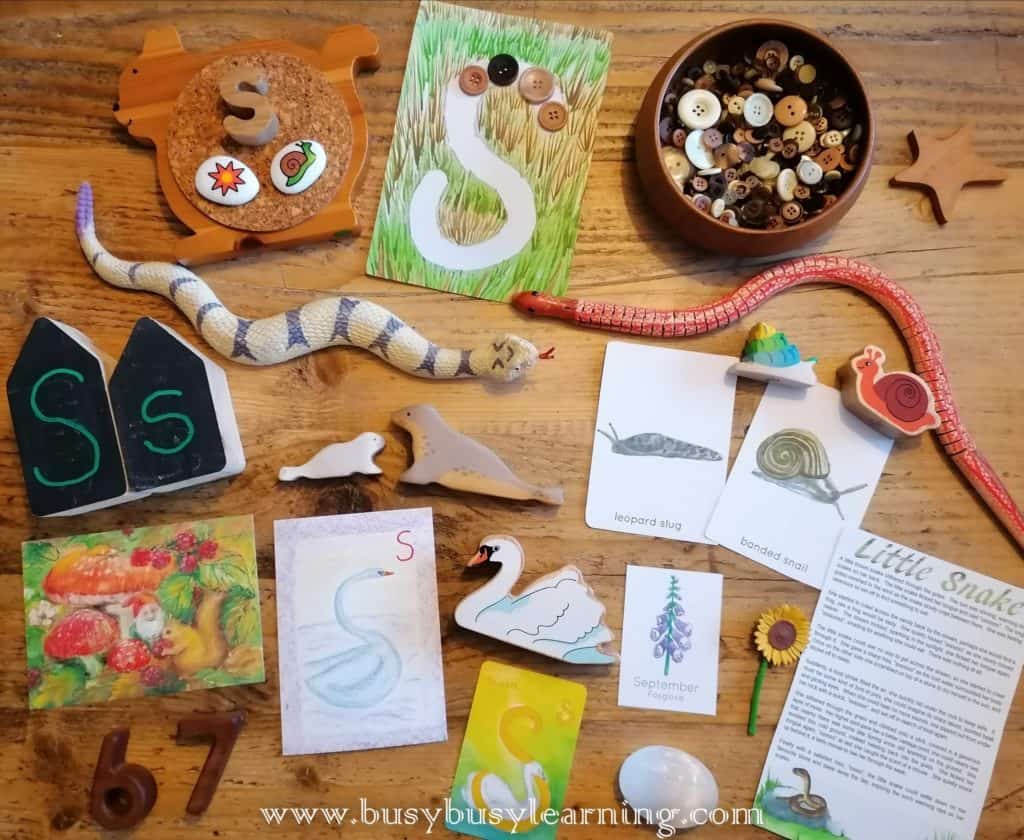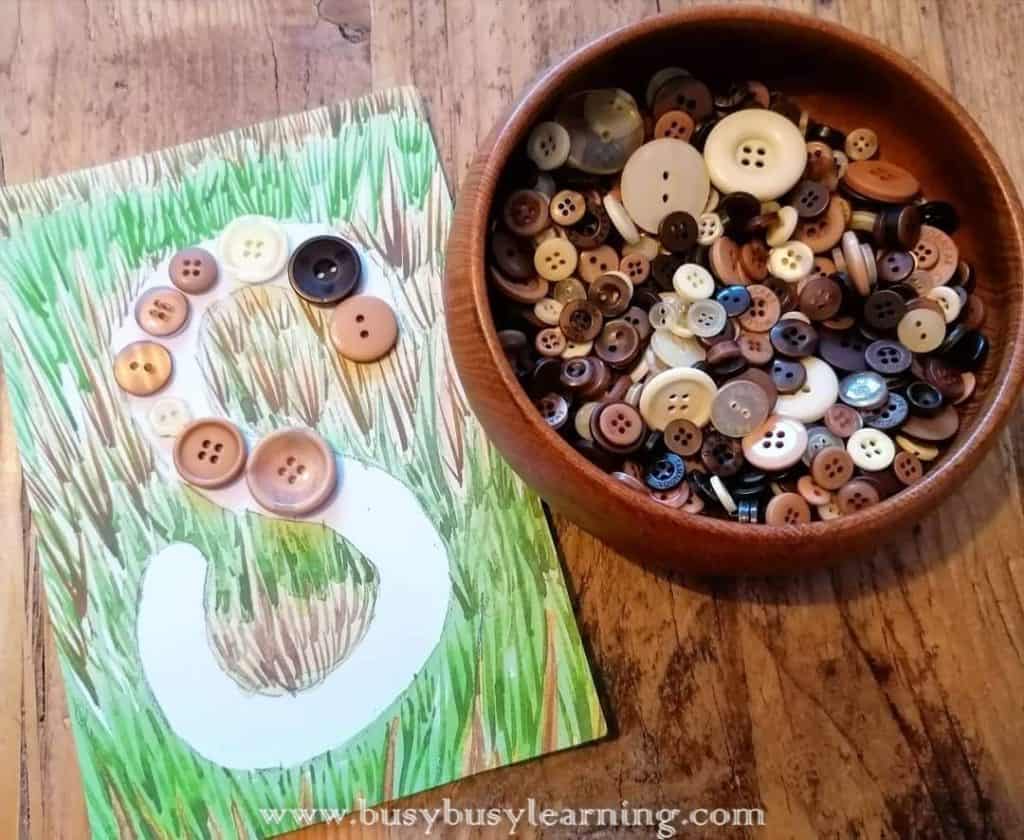
Phase 2
Beginning phase 2 (find out more about phases here) phonics is always an exciting time for little ones – learning the secret code of those symbols they’ve been seeing for so long. Usually, children begin learning the phoneme S first.
This website contains affiliate links. As an affiliate I may earn money from qualifying purchases. Thank you if you do use one of my links – it helps keep my website going. Please see affiliate link and disclaimer page for more information.
Phoneme – A sound – not a letter. There are approximately 44 sounds in the English language (I say approximately as accents can make this differ). When you see something written as a sound it will have a forward slash at the beginning and end of the sound. For example /a/.
This post will give you some five minute phonics ideas and activities to introduce the phoneme S or consolidate the learning they’ve done in their setting. Lots of the ideas can be used for other phonemes too.

Grapheme – How you write the sound (phoneme) using a letter or number of letters. For example – the five letter word night consists of three sounds (phonemes): /n/ /ie/ /t/ and is written using three graphemes: ‘n’ – ‘igh’ – ‘t’.
Introducing the Sound
Introduce the sound first by saying the sound and showing the grapheme. Make sure the sound is pure ‘ssss’ rather than ‘suh’. If you’re not sure what I mean check out the video in this post here.
Showing the grapheme could be on a flash card – homemade or purchased or a magnetic/ wooden letter. I like to use lots of different types, it’s so useful for them to see that the same letter can be written in different ways, handwritten, typed, different sizes and fonts.

Matching Game
Our daughter Floss loves matching activities. As each new sound is introduced you can extend the game. You can match with different objects that start with the same letter or use graphemes and/ or objects.
More Games
If you’d love some more games suitable for phase 2 then you can find ideas in this post using resources you can make at home.

Letter Formation Phonics S

Being able to recognise the shape of a grapheme is important to be able to read and spell. The activity above uses the ‘s’ from Fiddlesticks.Kids Phonics pack (BUSYBUSYLEARNING Discount Code).
- Magic pen is an activity that you do with your finger. Encourage your little one to use their magic finger and trace the shape of the letter. Gently prompt them to start at the top of the ‘s’ (most letter shapes start at the top).
- Buttons can be placed on the ‘s’ to follow the shape. You can use any objects – pom poms, little animals etc. Again, encouraging them to start at the top of the letter as this will aid writing. This activity is great to develop fine motor control.
- Rainbow writing means using as many different colours of pencil, crayon, pen or paint to follow the letter shape. You can also use a folder like below and trace the shape using a dry wipe pen.
- Playdough is a lovely sensory material to use to develop letter formation and strengthen those hand muscles ready for writing. You can take small pieces of playdough and follow the shape or roll a sausage and form the ‘s’ shape.
As you’ve probably already realised, these activities would work for any grapheme. So, you can have a go whatever sound your child is learning.

Reading for Pleasure
Stories are a great way to develop phonics skills. Stories can be made up by yourself, fiction and non-fiction books or specific phonics readers. Ask your child to spot the sound you have been learning. How many can they find in a word, sentence, on a page? As you say a word can they hear the sound? Where is the sound in the word (beginning, middle or end)?
When children begin to learn phonics it can be very easy to get lost in every reading opportunity becoming all about phonics. If your child is at school then they are likely to be bringing home books (these are usually levelled – book band books – if you’d like to find out more about these check out this blog post) for them to practise their phonics with.
Learning to read is exciting for children, but it’s also hard work and tiring. It’s important to get a balance between learning to read and reading for pleasure. Ensure that you continue to read wonderful stories together, rich in language and beautifully illustrated. Immersion in exciting, new vocabulary and imaginary worlds will help them develop essential creative skills for the future.

Child Led
Using topical and seasonal toys, resources and ideas helps children to learn phonemes and their corresponding graphemes and gives the learning a purpose. Floss loves the natural world and so I generally try to link the phonics work we do to plants, animals and the weather. Things that genuinely pique her interest. If you’ve got a transport mad child then basing the phonics around that theme would be perfect. It’s always good to go with your child’s interests.

Story Stones
Another resource I love are story stones. These ones below are by Imagistones. Great for making up stories, but also perfect for phonics work. They can be used as objects to match initial sounds, collect objects that start with the same sound, for prompts to spell words such as ‘bus’ or identifying whether a sound is at the start, middle or end of an object picked.

Resources
- Phonics Resource Pack – Fiddlesticks.Kids (Discount BUSYBUSYLEARNING)
- Imagistones Story Stones
- Weather Pegs by Resourceful Me
- Animals, fairies and letter from Yes Bebe (Discount BUSY10)
- Clear Pouches
